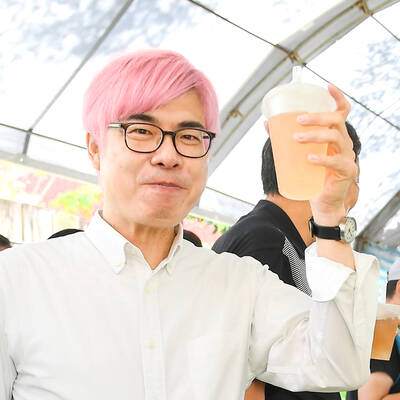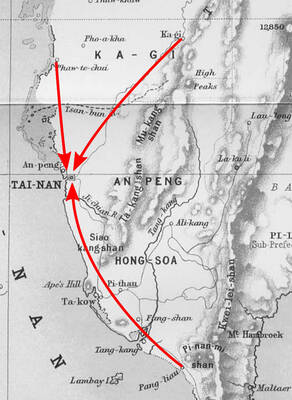Seventy-two years after the Nanjing Massacre, the atrocity remains an unresolved trauma. China estimates a death toll of some 300,000, while Japan has yet to offer a formal written apology. In Chinese director Lu Chuan’s
(陸川) third feature City of Life and Death (南京!南京!), this sensitive subject is given a dramatic contour that fortunately dwells neither on excessive grief nor nationalistic indignation.
Shot in black and white, the artistically accomplished film takes a gut-wrenching look at the brutalities that took place during a six-week period starting in December 1937. Not afraid of portraying the blurring of moral boundaries on either side of the conflict, director Lu chooses to show the irrationality of war through a succession of events centering on a small number of characters, both Chinese and Japanese, examining humanity in its faults and virtues.
It is the winter of 1937. We follow a Japanese soldier and enter the devastated Chinese capital of Nanjing. The camera shifts to a Chinese resistance fighter (played by Liu Ye, 劉燁) and his men. Suddenly there is an exchange of machine gun fire and exploding grenades. We can hardly tell the Japanese soldiers from the Chinese fighters as the camera frantically switches perspective back and forth between the two sides who are shown as equals in terms of mettle and morality.
We then move deeper into the city with young Japanese soldier Kadokawa (Hideo Nakaizumi). He and his fellow soldiers stumble upon a church where Chinese men, women and children have taken shelter. Kadokawa trembles, rushes out and screams for backup. His cries linger amid the devastated landscape.
The city is soon filled with corpses of executed Chinese soldiers and civilians. Those who manage to survive find shelter in a refuge area operated by a score of Westerners including the “good Nazi” John Rabe (John Paisley). Female teacher Jiang (Gao Yuanyuan, 高圓圓) helps to oversee the camp and is a heroic archetype willing to risk her life to save others. Rabe’s Chinese assistant Tang (Fan Wei, 范偉) plays the role of collaborator as he tries to save his family by striking a deal with the Japanese.
Meanwhile, the camera takes us on a journey through the conflicted Kadokawa’s own personal hell, as he is destroyed bit by bit by the inhumanity that surrounds him.
To visualize an atrocity rarely visited by cinema, director Lu blends gripping realism with a lyrical style that gives his imagery its haunting power. The elegant black-and-white cinematography by Cao Yu (曹郁) exudes a sense of sober detachment and spares the audience from experiencing the full effect of the violence and gore, which may have appeared intolerably monstrous if filmed in color.
However, as a dramatic reflection on a national trauma, the film is designed to imagine the unimaginable. The bulk of the film shows civilians and soldiers being herded into groups and massacred, women gang raped and children killed. The violence is portrayed in an almost matter-of-fact manner. It sickens and repels, but posits no deeper significance. Strangely enough, it is only when the director is done with the raping and killing that his cinematic poetry begins to surface, enthralling the audience with its rich complexity of composition and imagery.
With production designer Hao Yi’s (郝藝) sets of destroyed buildings and streets, Nanjing resembles an impressionistic limbo that reflects the psychological frenzy and spiritual void of its inhabitants. The Japanese soldiers look no better than their ghostly victims, tramping through the desolate landscape like phantoms.
The most unforgettable cinematic moment takes place toward the end of the film. A Japanese victory ritual is performed with rhythmic drumming and dancing by soldiers. The men perform ceremonial gestures, slowly marching down the empty, ruined streets. The sight is eerie and unworldly, much like the atrocity itself. An unthinkable horror has been rendered in cinematic form right before our eyes, yet it remains unfathomable even seven decades later.

The Taipei Times last week reported that the rising share of seniors in the population is reshaping the nation’s housing markets. According to data from the Ministry of the Interior, about 850,000 residences were occupied by elderly people in the first quarter, including 655,000 that housed only one resident. H&B Realty chief researcher Jessica Hsu (徐佳馨), quoted in the article, said that there is rising demand for elderly-friendly housing, including units with elevators, barrier-free layouts and proximity to healthcare services. Hsu and others cited in the article highlighted the changing family residential dynamics, as children no longer live with parents,

It is jarring how differently Taiwan’s politics is portrayed in the international press compared to the local Chinese-language press. Viewed from abroad, Taiwan is seen as a geopolitical hotspot, or “The Most Dangerous Place on Earth,” as the Economist once blazoned across their cover. Meanwhile, tasked with facing down those existential threats, Taiwan’s leaders are dying their hair pink. These include former president Tsai Ing-wen (蔡英文), Vice President Hsiao Bi-khim (蕭美琴) and Kaohsiung Mayor Chen Chi-mai (陳其邁), among others. They are demonstrating what big fans they are of South Korean K-pop sensations Blackpink ahead of their concerts this weekend in Kaohsiung.

Taiwan is one of the world’s greatest per-capita consumers of seafood. Whereas the average human is thought to eat around 20kg of seafood per year, each Taiwanese gets through 27kg to 35kg of ocean delicacies annually, depending on which source you find most credible. Given the ubiquity of dishes like oyster omelet (蚵仔煎) and milkfish soup (虱目魚湯), the higher estimate may well be correct. By global standards, let alone local consumption patterns, I’m not much of a seafood fan. It’s not just a matter of taste, although that’s part of it. What I’ve read about the environmental impact of the

Oct 20 to Oct 26 After a day of fighting, the Japanese Army’s Second Division was resting when a curious delegation of two Scotsmen and 19 Taiwanese approached their camp. It was Oct. 20, 1895, and the troops had reached Taiye Village (太爺庄) in today’s Hunei District (湖內), Kaohsiung, just 10km away from their final target of Tainan. Led by Presbyterian missionaries Thomas Barclay and Duncan Ferguson, the group informed the Japanese that resistance leader Liu Yung-fu (劉永福) had fled to China the previous night, leaving his Black Flag Army fighters behind and the city in chaos. On behalf of the